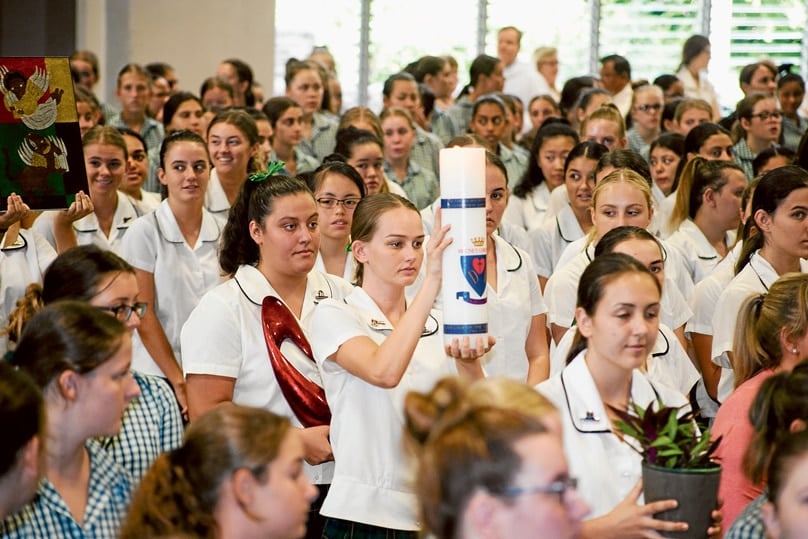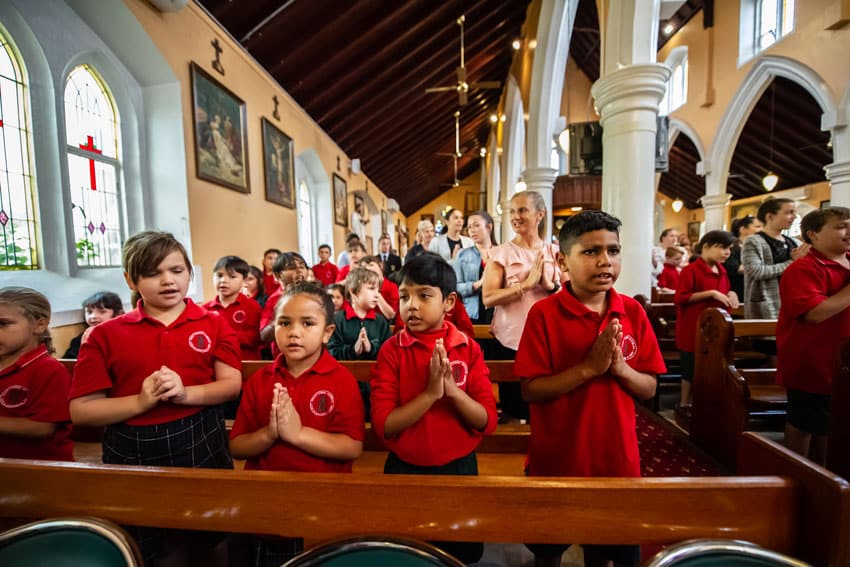
Over time, most organisations find a need to reflect upon their core business and people’s understanding of and commitment to it.
No group is immune from the dangers of ‘mission drift’, and if left unchecked this drift can severely compromise the core purpose and very identity of the organisation.
This is not just true of the business and political worlds, it is also a reality facing religious groups and faith communities. Within the context of the Catholic Church, it is a particular challenge for those engaged in education, healthcare and social welfare services.
Last week, the Congregation for Catholic Education released the instruction, The identity of the Catholic school for a culture of dialogue.
“At the same time, it recognises that some communities experience an ‘identity crisis’ because of divergent interpretations of being ‘Catholic’.”
Drawing upon a treasury of Church documents, the instruction highlights the unique positioning of Catholic schools as the ‘most valuable resource for the evangelisation of culture’ (n.95).
At the same time, it recognises that some communities experience an ‘identity crisis’ because of divergent interpretations of being ‘Catholic’. This ambiguity is unhealthy, for it can lead to conflict and reduce the effectiveness of a school’s evangelical intent.
The Congregation affirms that, ‘everyone has the obligation to recognise, respect and bear witness to the Catholic identity of the school … this applies to the teaching staff, the non-teaching personnel, and the pupils and their families’ (n.39). This emphasis upon ‘shared responsibility’ is very important.

The community of the Catholic school involves an intersection of the Church, the family and the school. It will succeed in achieving its goals only if all these groups work together in a spirit of harmony and co-operation, respect each other’s role rights and expertise and share the same goals.
This is especially true of shared mission, where a holistic integration is essential. The identity of the Catholic school for a culture of dialogue is highly relevant to our current Australian context.
As an increasingly multicultural, multi-faith society, Australia is pluralistic in nature, and people are generally respectful of the diversity of other people’s beliefs and religious adherence. Our Catholic schools reflect this. In recent decades they have increasingly drawn together people from diverse backgrounds and with different sets of beliefs.
At times, this has not been without its challenges. While each community is shaped by a range of socio-cultural and historical contexts, it is important that they read and respond to the signs of the times, and remain open to renewal.
“… this missionary focus represents a model of ‘Church which goes forth in dialogue with everyone … and at the same time we need the courage to bear witness to a Catholic culture …'”
No community is impervious to change. Shifts in demographics, beliefs, attitudes and practices can change the very nature of a community. A new pastoral reality requires a renewal of missionary focus.
As per the instruction, this missionary focus represents a model of “Church which goes forth in dialogue with everyone … and at the same time we need the courage to bear witness to a Catholic culture, that is universal, cultivating a healthy awareness of our own Christian identity” (n.72).
If properly addressed, Catholic schools can create a culture of dialogue which is meaningful and which responds to the split between faith and culture.

The celebration of the 200th anniversary of Catholic education in Australia not only highlighted its importance to the Church’s evangelising and catechising mission, but its contribution to the common good and the nation’s social capital.
Notwithstanding their long and proud history, and their many fine achievements, Catholic schools must never be viewed as, or operate from, the perspective of solely being ‘educational entities’.
Nor should they be considered de-facto parishes. Rather, their vision, mission and identity is informed by and should reflect their distinctly ecclesial context, as they support and collaborate in the work of the Church.
Animated by the spirit of the Gospel, Catholic schools must be places of welcome, hospitality and service, where the seminal truths and values of a Catholic worldview are celebrated and shared, and a spirit of genuine community is fostered.
“They exist in the hope that all members will have a personal encounter with Jesus, ‘the way, the truth and the life’.
Most importantly however, they must be Christocentric in nature and purpose and derive their identity from the person of Jesus Christ.
They exist in the hope that all members will have a personal encounter with Jesus, ‘the way, the truth and the life’, and be empowered in their Christian witness and discipleship.
As affirmed by the Congregation for Catholic Education, this ‘personal relationship with Christ enables the believer to look at the whole of reality in a radically new way’ (n.20).
